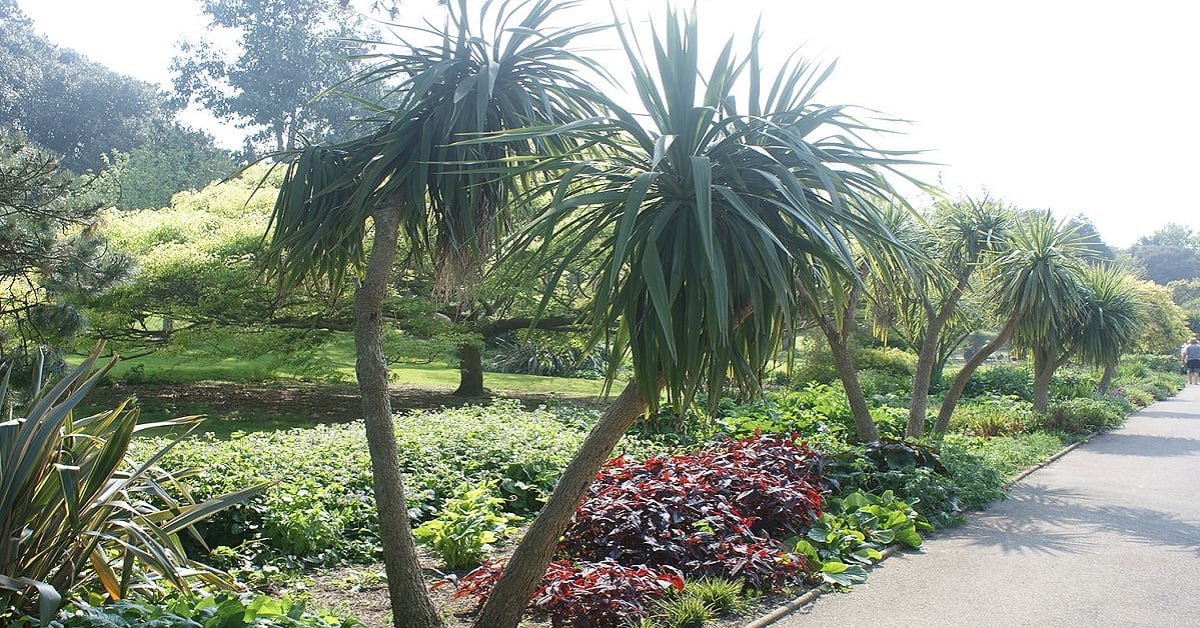
From its spot smack dab in the middle of Florida’s west coast, Tampa has access to all the best the state has to offer. That includes beautiful beaches, amusement parks, and tropical flora and fauna. And no tropical plant is more iconic than the palm tree, especially in Florida.
Palm trees are a signature part of Florida’s natural scenery, and they can enhance your landscape, too. Because most palm trees prefer full sun and high humidity, Tampa is a near-perfect place to grow them in your yard.
Palms are such an iconic part of Tampa that Tampa Palms is the name for a neighborhood in New Tampa. And you’re right if you guessed that palms are a hallmark feature of the neighborhood.
There are more than 2,500 species of palms to choose from, and nearly all of those are suitable for growing in your Tampa yard. Once you’ve selected the right palm trees for your lawn, we’ll show you how to landscape with palm trees in Tampa.
How to Choose Palm Trees for Your Yard
Tampa is in USDA Hardiness Zone 9b, which means the minimum temperature in winter ranges from 25-30 degrees. It’s hot and humid in summer (this is Florida, after all) but not quite warm enough year-round for some species of palm trees.
It may sound silly for someone who suffers through Tampa’s sweltering summers, but you should look for cold-hardy palm tree varieties. Some of the most popular cold-hardy species include the pindo palm, the saw palmetto, and the sago palm (which is technically not a palm but a cycad).
Some less cold-hardy palm trees, such as those that thrive in zones 10-11, can survive in Tampa with some help in the winter. However, these species will probably never be as large or as vibrant as they would be farther south.
Whatever types of palm trees you choose, here are five ideas on how to incorporate them into your landscape design.
1. A frame of palm trees
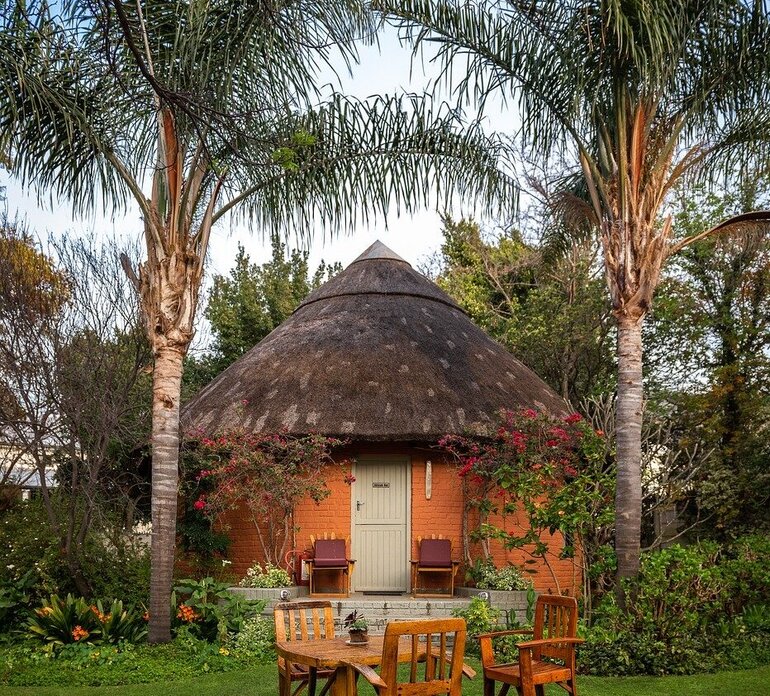
Palm trees can be a great way to frame an important landscape feature such as an outdoor living space, a swimming pool, or a driveway.
You can use one tree on either side of an entryway to make it look more dramatic and inviting. If you have a long driveway or walkway, you could even mimic the two rows of palm trees that line Hollywood Boulevard.
Whatever landscape feature you want to accentuate, tall palm tree species are best. They’ll draw more attention than smaller palms and make the whole scene seem more exotic and adventurous.
Types of palms that would work well for this look:
- Canary Island date palm (Phoenix canariensis)
- Sabal palm (Sabal palmetto)
- Sylvester palm (Phoenix sylvestris)
- Coconut palm (Cocos nucifera)
2. Plant a cluster of palm trees
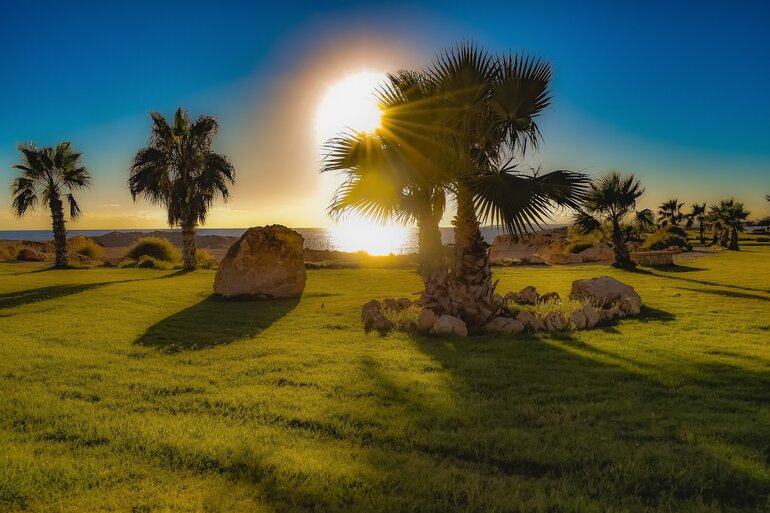
Planting a few palm trees together in their own bed is a simple way to give your landscape a tropical feel. This look works with multiple single-trunk trees or one multi-trunk variety.
This statement piece stands out on its own, but you can surround the cluster with a natural rock border, edging, or mulch to elevate the design.
Types of palms that would work well for this look:
- Sugar cane palm (Dypsis baronii)
- Senegal date palm (Phoenix reclinata)
- Christmas palm (Adonidia merrillii)
- Mediterranean fan palm (Chamaerops humilis)
3. Don’t go green — use colorful palm trees
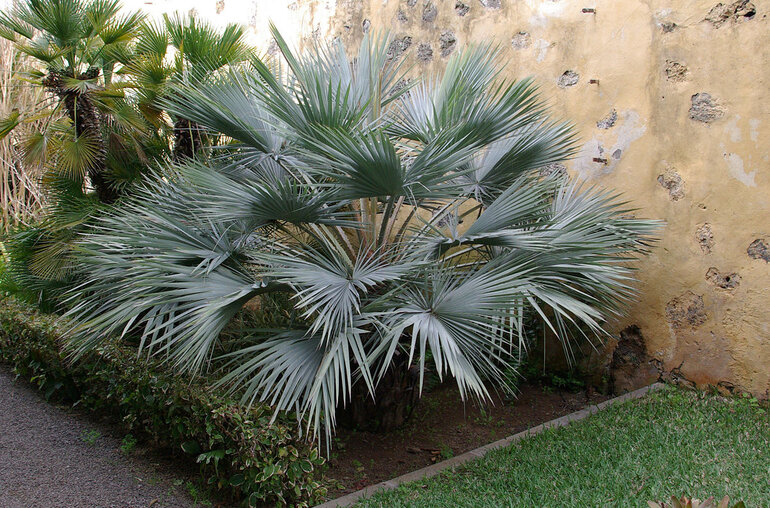
From the silvery blue fronds of the Mexican blue palm to the bright red trunk of the lipstick palm, palm trees have a lot more to offer on the color front than plain old green. Some bloom with vibrant flowers in the summer and some maintain their splashes of color year-round.
Using a more colorful species of palm tree can give your landscape a unique and exotic look. If you’re feeling extra adventurous, you can mix several different species for varying pops of yellows, oranges, reds, and blues.
Types of palms that would work well for this look:
- Mexican blue palm (Brahea armata)
- Lipstick palm (Cyrtostachys renda)
- Windmill palm (Trachycarpus fortunei)
- Flame thrower palm (Chambeyronia macrocarpa)
4. Make a small palm the centerpiece of your flower bed
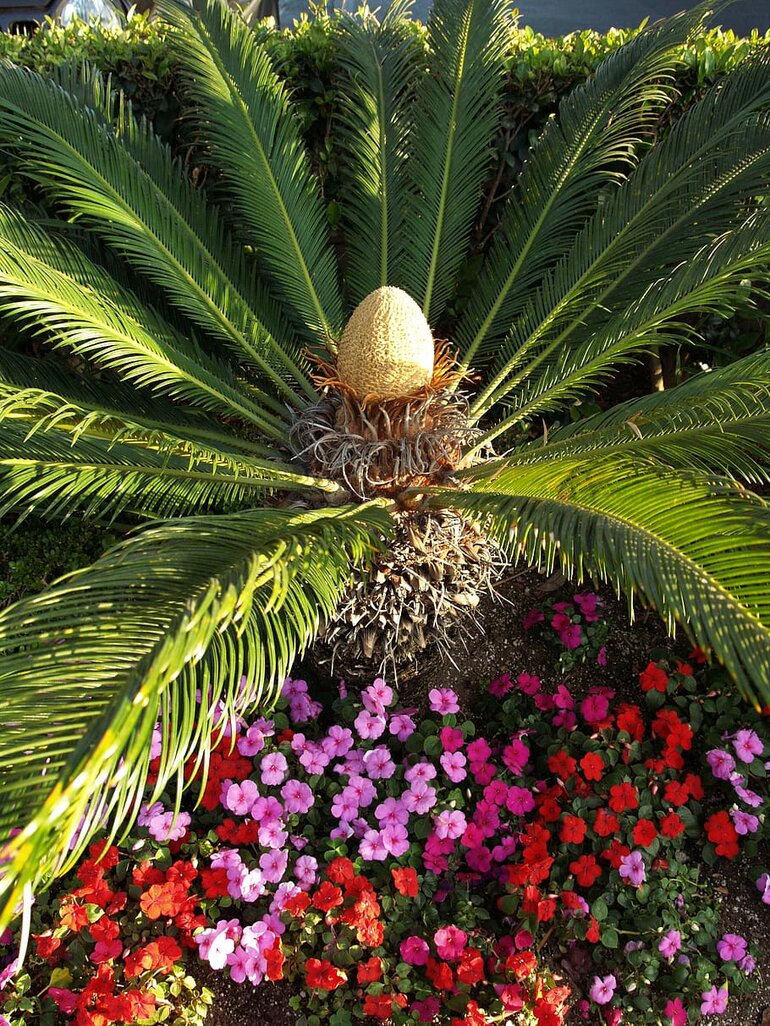
With their interesting textures and tropical look, palm trees can take your ordinary flower bed to the next level. Small palms make a great focal point that stands out against a backdrop of flowers and shrubs.
Since most palms of this size are green, you’ll want to surround them with a rainbow of blossoms to make your plant bed even more visually striking. Butterfly weed, the spiked blazing flower, and beautyberry are all native Tampa plants that would highlight your palm tree well.
Types of palms that would work well for this look:
- Butterfly palm aka areca palm (Dypsis lutescens)
- Majesty palm (Ravenea rivularis)
- Cat palm (Chamaedorea cataractarum)
- Bamboo palm (Chamaedorea seifrizii)
5. Add potted palm trees to your container garden
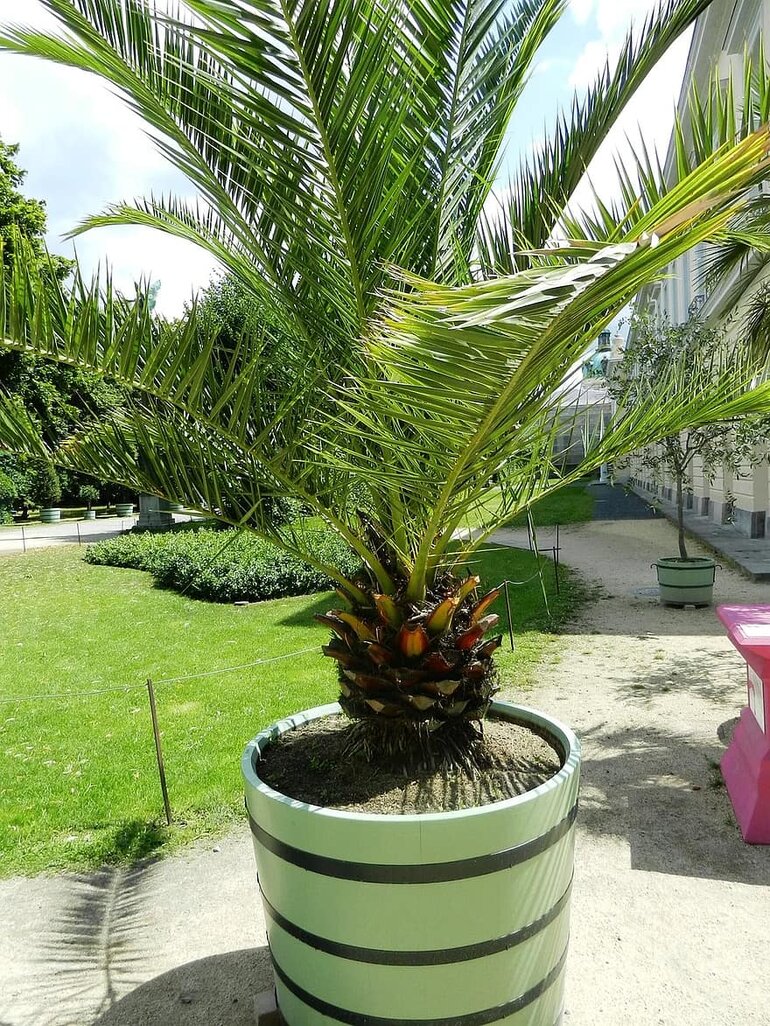
Life in downtown Tampa might be conveniently close to the constant activity of Ybor City, but it can feel pretty far away from nature. With a container garden, you don’t have to make that tradeoff. Several species of small palm trees and slow growers can thrive in a pot.
You can arrange your potted palms on the sidewalk, by your front door, your apartment balcony, or even on your rooftop to create a tropical getaway in the middle of the city.
Potted palm trees have benefits even outside of urban areas. If temperatures drop below freezing during winter, all you have to do to protect your potted palm is bring it inside. That means when you use a pot, you can plant some of the less cold-hardy palm tree varieties.
Types of palms that would work well for this look:
- Lady palm (Rhapis excelsa)
- Dwarf palmetto (Sabal minor)
- Silver European fan palm (Chamaerops humilis cerifera)
- Pygmy date palm (Phoenix roebelenii)
FAQ about landscaping with palm trees in Tampa
What are Florida’s native palm trees?
Even though you can find just about any kind of palm tree somewhere in Florida, there are only 12 native species. These will typically be the easiest varieties to find in local nurseries. They are:
- Sabal palm, the state tree*
- Royal palm
- Needle palm*
- Miami palm*
- Saw palmetto*
- Silver palm*
- Paurotis palm
- Key thatch palm
- Buccaneer palm
- Dwarf palmetto*
- Florida thatch palm
- Scrub palmetto*
*suited for Tampa’s USDA Hardiness Zone
Why are palm trees dying in Florida?
Lethal bronzing disease, a tree disease that spread from Texas via bacterium, has been killing Florida palm trees since 2005. The disease has been in the Tampa Bay area since 2006. It causes premature fruit drop, browning leaves, and eventually plant death.
Learn more about how to save your palm trees from lethal bronzing disease.
When to Hire a Professional Landscaper
If you’re planting a tall palm tree that’s fully grown, you’ll probably require help from a professional Tampa landscaper or tree care specialist. Large trees can be difficult to transplant, so it’s best to let the pros handle this kind of project.
Even if you’re planting a small palm tree, you might enlist a professional’s help to make sure you plant the tree where it can thrive. It will most likely need a spot in full sun with moist soil. A landscaper can help you choose the best location in your own yard.
Whichever of the 2,500+ options you decide to plant, it’s easy to make your new palm tree the star feature of your landscape. Just remember to choose a variety that can survive Tampa’s two-faced climate. As long as you do that, the world of landscaping with palm trees is your oyster — or rather, your coconut.
Talk to a Phoenix landscaping expert if you need help selecting plants or trees for your landscape.
Main Image Credit: “Palm trees at Ventnor Botanic Garden 2” from Wikimedia Commons CC 3.0